"They said it would never happen…" is how the Misfits reunion is being presented, and for good reason. No reasonable person expected Glenn Danzig and Jerry Only to step into a room together after a decades-long beef that saw multiple lawsuits launched, but on September 4 in Denver and September 18 in Chicago, the "original" Misfits will reunite for their first shows together in 33 years. Fans have a reason to be ecstatic.
The Misfits legacy has grown incredibly since Danzig left the band back in 1983, expanding into a merchandise-driven business that only pales next to the originators themselves, KISS (yes, there are Misfits undies and obviously a coffin-shaped lunchbox). They are unique in that the band's name, mascot and infamous history have generally dwarfed the actual music. If you see a 12-year-old sporting a Fiend-emblazoned tee, there is a good chance s/he has never even heard Glenn Danzig bellow, "I got something to say!" And while the Misfits have been going strong for the last two decades under the command of Only, it felt like nothing but homage without Danzig on the mic.
Danzig is one of music's most intriguing figures. So many stories have been told, and only a few verified. It's only when we see it caught on video — like when he was sucker-punched by an unknown punk, tried to attack a photographer or shared his favourite books — that we know he is human just like us. He has one of the greatest voices rock'n'roll ever produced, and though he's habitually compared to Elvis Presley and Jim Morrison, Danzig has manifested an aggressive style of his own that has influenced generations. He also used that voice in a manner of ways through three different bands: the animated horror-punk of the Misfits, the wicked deathrock of Samhain and the downright evil blues-metal of Danzig.
With the incredible return of the Misfits, we offer up our Essential Guide to the work of Glenn Danzig. (For even further reading, check out Exclaim!'s 2010 Timeline on Danzig here.)
Essential Albums:
5. Danzig
Danzig
(1988)
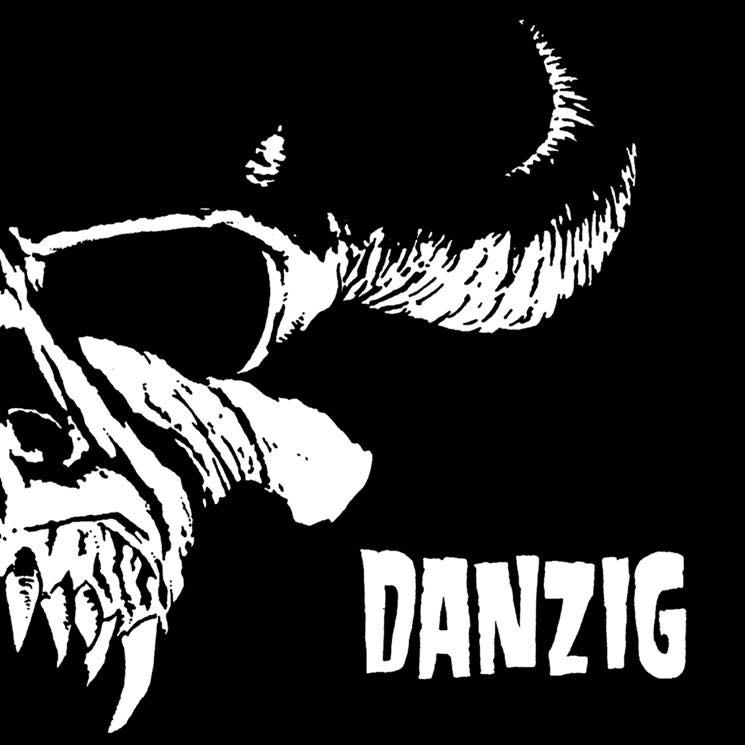
In 1986, Glenn Danzig was courted by Rick Rubin for his Def American label. Though Danzig first refused to give in to Rubin's demands, which were to break up Samhain and form a new band that showcased his vocals, they worked out a deal where Danzig could bring Samhain bassist Eerie Von and new guitarist John Christ aboard with drummer Chuck Biscuits, who Rubin suggested. The name Danzig stuck, simply because Glenn wanted the freedom to change lineups when he pleased.
The self-titled, Rubin-produced 1988 debut by Danzig marked another genre shift for the musician, and Rubin's influence shouldn't go unstated. Samhain's doom-laden deathrock mutated into a slower, blues-driven hard rock sound steered by Danzig's new style of singing, a croon that called upon the ghosts of Elvis Presley and Jim Morrison. Unlike anything he'd done before, Danzig follows a steady pace and places deeper emphasis on exploring his interest in themes like the occult and the Devil. As such, his lyrics are more sinister and haunting here, leaving very little room for his trademark humour.
Danzig remains the most prized release by his titular band because of its freshness. Sure, Danzig himself takes it front and centre from the moment "Twist of Cain" kicks in, but Christ absolutely rips on his BC Rich, both propelling the songs forward and unleashing demons when he solos on "Possession" and "Not of This World." Biscuits and Von, on the other hand, hold down the rhythm section with a mighty thump on the galloping "Am I Demon" and, of course, the swaggering "Mother," Danzig's signature song that became a crossover hit after getting remixed five years later. It's a heady synthesis, and although it can be argued they improved as a unit on the subsequent Lucifuge, the band's raw energy and novelty on their debut helps it stand out.
4. Samhain
Samhain III: November-Coming-Fire
(1986)
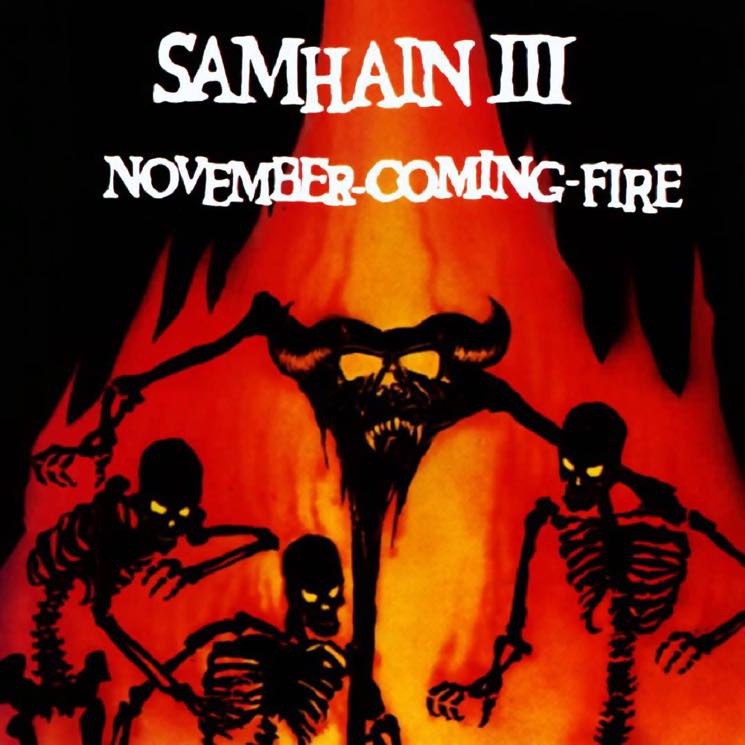
Following his acrimonious split from the Misfits, Danzig followed through with plans to form his Samhain project with friend Eerie Von, which was originally intended to be a side-project. Traces of Danzig's old band were pretty noticeable on the first two Samhain releases — 1984's debut Initium and 1985's Unholy Passion EP — but November-Coming-Fire would prove to be a significant step forward.
Of course, the Misfits weren't completely forgotten, but November-Coming-Fire brought far more depth to their menacing deathrock. Almost every track sounded different from the next: from goth-tinged opener "Diabolos 88" to the '50s rock'n'roll of "To Walk the Night," from the proto-grunge of "Mother of Mercy" to the thrash-punk attack on "Birthright" and "Kiss of Steel."
Not long after NCF's release, Danzig was already discussing the end of the band with future label boss Rick Rubin. Samhain thus ended without the glory and influence they deserved, but not without giving fans one true classic.
3. Misfits
Walk Among Us
(1982)
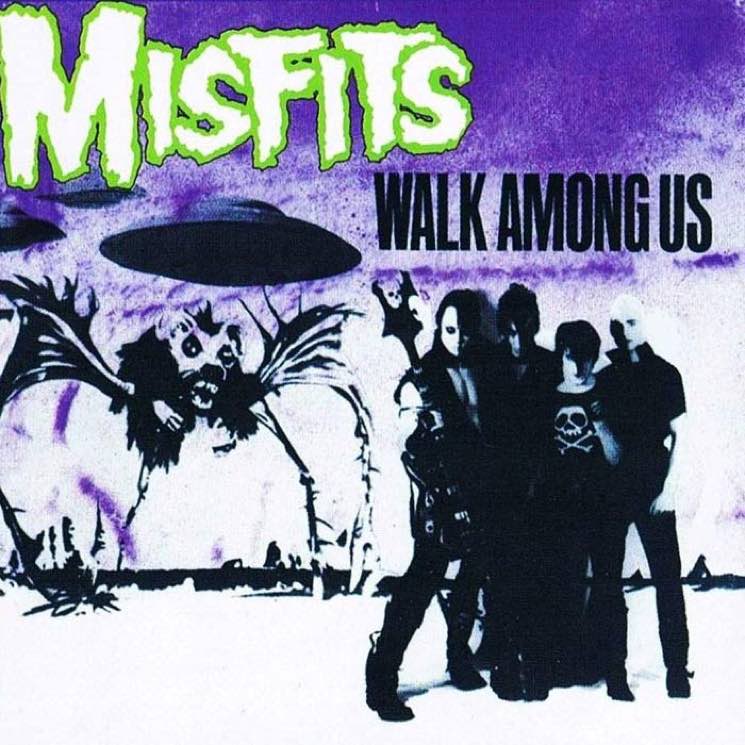
History was rewritten when the 1978-recorded Static Age finally saw a release in 1996, so it's easy to forget that Walk Among Us was actually the first full-length to be released by the Misfits. Because of the years in between the recording of the two albums, WAU is the more consistent one, benefitting from a fully formed horror-punk sound and aesthetic.
From the album's title (inspired by 1956 film The Creature Walks Among Us) and cover to tracks like "I Turned into a Martian," "Night of the Living Dead" and "Astro Zombies," the theme was heavily and playfully rooted in '50s/'60s horror and sci-fi, and no matter how cartoonish it gets — "Brains for dinner / Brains for lunch / Brains for breakfast / Brains for brunch" Danzig sings on "Braineaters" — they can still drop in a thrash-punk blinder called "Mommy, Can I Go Out and Kill Tonight" that is dead fucking serious.
Despite being recorded at a number of studios, Danzig managed to make Walk Among Us cohesive with a series of overdubs. And yet, there is still a rawness to these hard-charging anthems that upholds its legacy as rightfully punk. Coming in at under 25 minutes, it's a total romp that remains one of punk rock's most inimitable albums.
2. Danzig
Danzig III: How the Gods Kill
(1992)
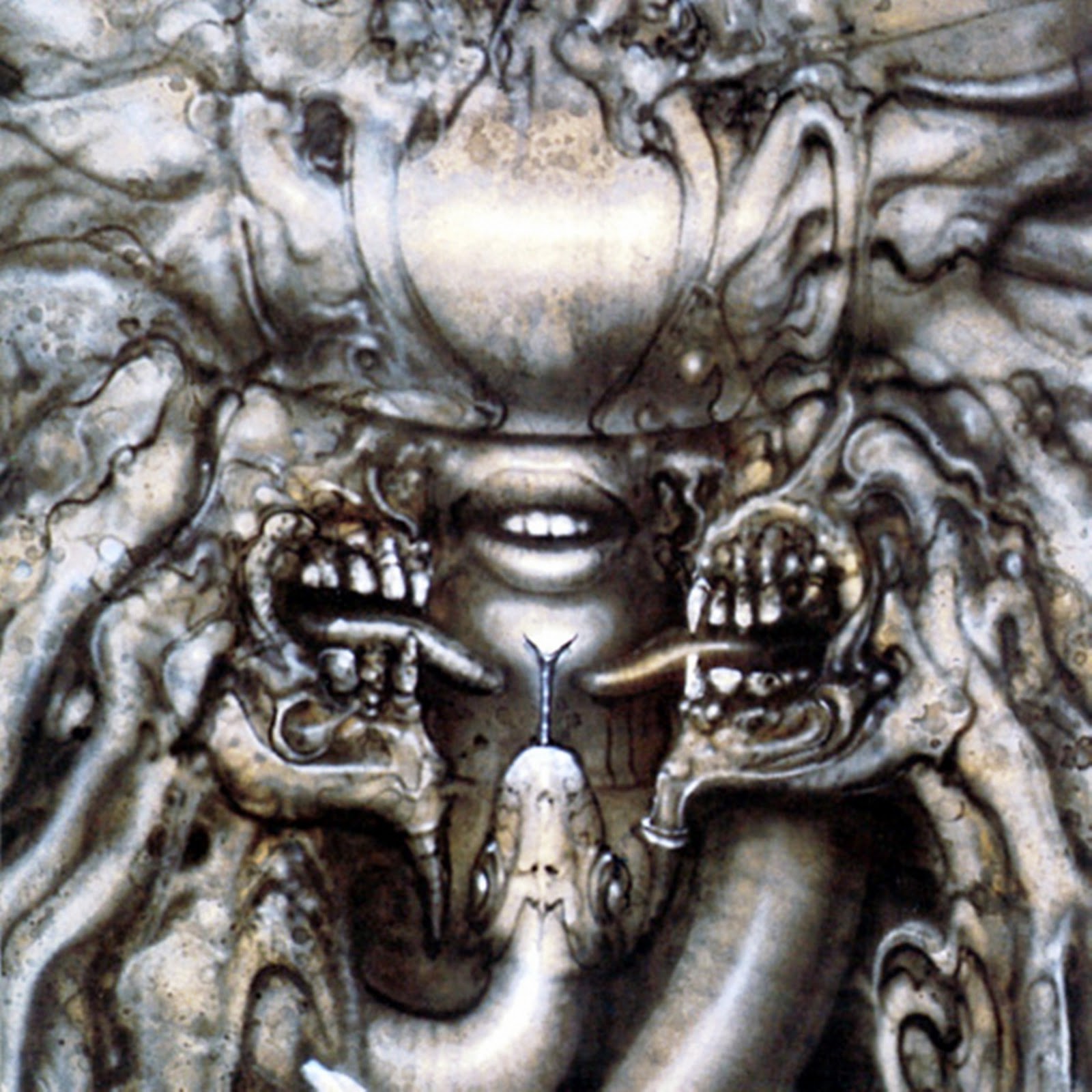
Whereas the first two Danzig LPs shared plenty of common ground both thematically and sonically, the band's third broke new territory. How the Gods Kill found Danzig sinking deeper into the recesses of his soul, pulling out a collection of songs that found the band progressing far beyond simple blues metal. Featuring a modified version of H.R. Giger's goth masterpiece, Meister und Margarita on the cover, Danzig conjured a nightmarish world over 10 songs that complemented the piece.
Danzig himself has said this album was "full of violent frustration," and he lays it out at the start with the religion-baiting "Godless," a relentlessly swelling track that finds him agonizingly delivering his words over Christ's fretboard annihilation. In fact, the guitarist steals the show on just about every song here, laying down chunky riffs on "Dirty Black Summer" and "When the Dying Calls" deserving of Guitar Hero immortalization.
But it's the softer moments that make HtGK such a unique beast. The epic title track is very much the band's "Stairway to Heaven," slowly ascending from some hushed strumming into an eruption of frenzied riffing and Danzig's demonic wail. And then there's "Sistinas," Danzig's power-ballad on which a reverbed guitar lead, some strings, a timpani and Danzig himself channelling his hero Roy Orbison with his most tender vocal yet combine to stirring effect. It's Danzig at their best.
1. Misfits
Static Age
(1996)
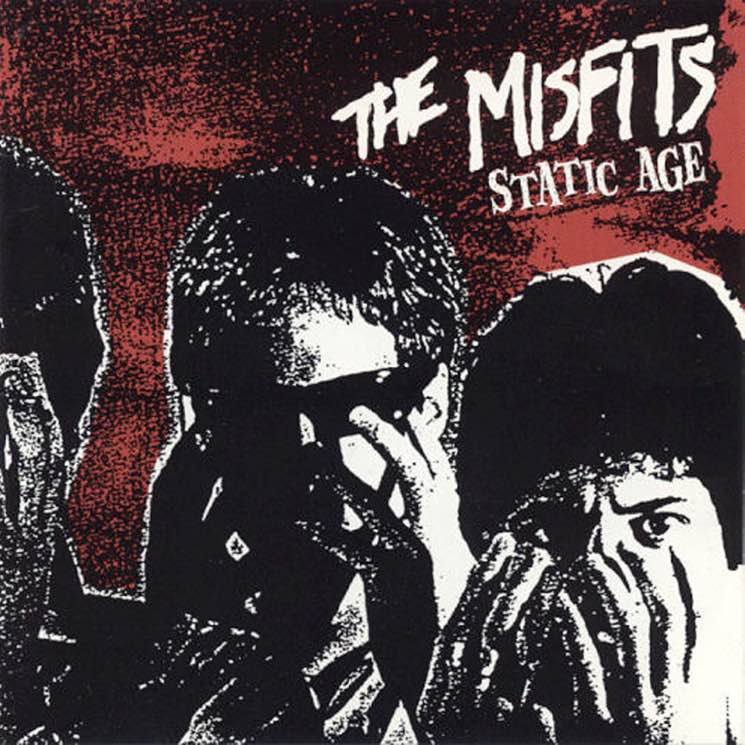
Punk rock had reached its zenith in 1978, a year that saw the launch of Greg Ginn's SST label and the end of the Sex Pistols. The Misfits were on course to release their debut album, which was in the can and all set to go; the only problem was that they couldn't find a label interested in putting the thing out. While the band sporadically released versions of its songs over years, the album itself sat on the shelf for nearly two decades.
The Misfits hadn't yet developed their horror punk aesthetic when Static Age was made, but the themes and imagery were there bubbling in Danzig's lyrics for "Return of the Fly" and "Teenagers from Mars." Unlike a lot of punks, Danzig wasn't interested in airing any social or political grievances. He chose to write escapist fiction based on the perverted ideas that lurked in his disturbed imagination. Even when he did write about historical events, he chose to use a horrifically depraved angle, like JFK's "bullet-ridden body" and "shattered head" in "Bullet." But Danzig packaged these nasty lyrics in some of punk's most irresistible melodies, and somehow made the truly appalling chants of "Last Caress" something even mothers could find catharsis in yelling.
It's hard to say just how much of an impact Static Age would have had were it released in 1978, but considering the hostility between members, we should be grateful that it ultimately even surfaced at all. Naturally, there are fans that believe Walk Among Us is the superior work, and that's a fair argument. But while that album has cohesion going for it, there's no denying that Static Age wins when it comes to the songs: "Last Caress," "Hybrid Moments," "TV Casualty," "Attitude," "Bullet." Static Age is stacked like almost no other punk album ever.
What to Avoid:
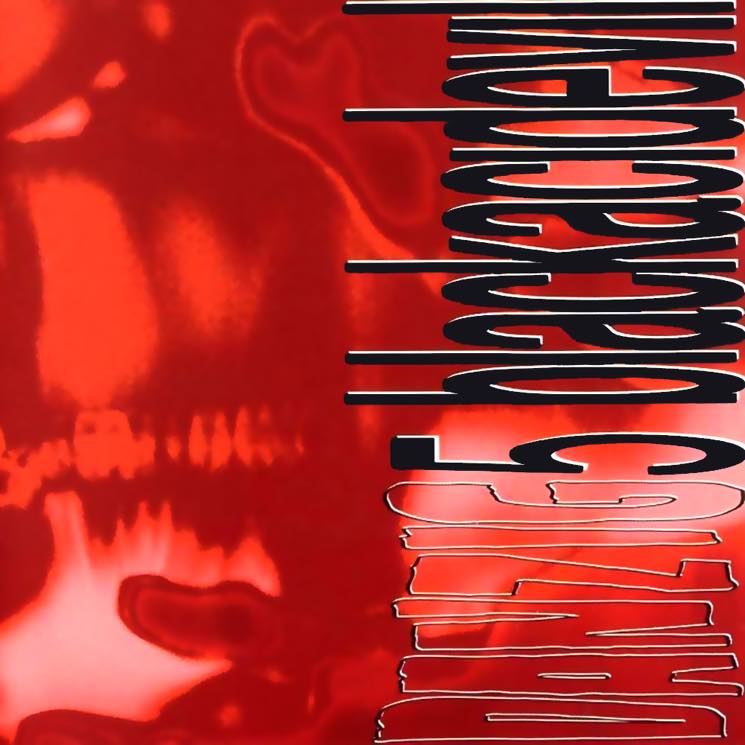
Danzig may have entered the 1990s in peak shape, but once the band parted ways with Rick Rubin, everything seemed to fall flat. It's hard to argue that anything after 1995 is really worth your attention. Christ, Von and Biscuits all left, and Glenn Danzig reassembled a new team for 1996's Blackacidevil, an album that found him desperately trying to fit into the zeitgeist for the first time ever, aping the industrial rock sounds acts like Nine Inch Nails and Ministry were popularizing. 6:66 Satan's Child (1999) was more of the same industrial nonsense, but thankfully, Danzig made an attempt to return to his tried and true blues-metal on 2002's passable I Luciferi.
Things began to look up when Prong's Tommy Victor joined on guitar for 2004's Circle of Snakes, but even that addition couldn't return the band to true form. In fact, it would take Glenn until 2010's Deth Red Sabaoth to find some sort of groove again, but unless you're dying for more Danzig, it's inessential.
There's a quite a bit of Misfits stuff that came out after Danzig left the band. Legacy of Brutality from 1985 is a compilation of songs that pre-date the release of Static Age, and looking at it now, its existence is pretty superfluous; the fact that Danzig re-recorded and overdubbed parts so he could take all of the royalties alone is a good indication to stay away from it. Evilive (1982) might be the only legit live recording the Misfits ever released, but unless you want a shitty, smothered recording of basically just Walk Among Us live, it's best to avoid.
Further Listening:

It feels weird not giving 1990's Danzig II: Lucifuge essential status because it's such a strong album. Rubin upped his game from the band's debut, amplifying their brute strength as a unit on heavier tracks like the gang-chanted "Her Black Wings" and head-banger's delight "Tired of Being Alive." But it's the quieter moments that make Lucifuge stand out from its predecessor, like the Delta blues-infused "I'm the One" and "777," as well as the tender ballad "Blood and Tears," a convincing argument that Glenn Danzig has a soft side.
Danzig 4 (1994) was the final album produced by Rubin and released by his label, and while it doesn't quite live up to its three predecessors, the efforts to experiment with different textures are commendable. The self-explanatory "Sadistikal" tugs the line of industrial noise, an area Danzig would later return to with very mixed results; "Son of the Morning Star" pushes into even unlikelier territory, riding a jazz rhythm and Christ's muted, slack guitar playing. There are some heavyweights like "Until You Call on the Dark" and the creepy-as-fuck "Stalker Song" to make up for the tourism, but sadly, this was the last we'd hear from the original lineup.
Deth Red Sabaoth wasn't awful for a later-era Danzig album, but perhaps a sign that the recent Misfits business has rejuvenated him, his latest, 2015's Skeletons, is a solid demonstration that Danzig can do a lot with the music of others. Actually, his rendition of the Everly Brothers' "Crying in the Rain" is the most pleasant surprise, and we can only hope his next release is an album of just classics by Don and Phil.
Perhaps the most surprising thing to learn about Glenn Danzig isn't that he owns cats instead of hellhounds but that he is an accomplished neoclassical artist. His 1992 debut album, Black Aria, went straight to No. 1 on the Billboard classical chart upon its release, and that was even with a disclaimer that read: "This is not a rock record. It's not a Danzig record. If you're expecting to hear 'How the Gods Kill' or 'Mother,' don't buy it." Black Aria recycles some of the dark atmospherics and bells that Samhain later utilized, but you can hear the influence of new age, goth and Angelo Badalamenti throughout. Both the 1992 original and its 2006 sequel, Black Aria II, are worth a listen.
The remaining Samhain releases all offer some "murder, guts, and fun." The debut, 1984's Initium, is messy and even inadvertently amusing (it opens with Danzig biting down and warning, "You think you've known pain? You've known nothing!!"), but its blend of thrash, deathrock and, naturally, the Misfits (as on "Horror Biz") sounded like little else at the time. Case in point: the epic closer "Archangel," a gnarly, droning rocker that Glenn originally wrote for Dave Vanian of the Damned is an unsung classic and sounds about 30 years ahead of its time. Follow-up EP Unholy Passion (1985) is perhaps the most overlooked entry in Samhain's catalogue, but it's a fast and furious little release that bridges the sizeable gap between Initium and November-Coming-Fire. An original mix of the record exists somewhere, but Danzig allegedly re-recorded the drums and guitar parts himself so he wouldn't have to pay royalties to Steve Zing and Pete Marshall.
Their last album, 1990's Final Descent, arrived three years after Samhain ended and Danzig began; fittingly, it features early versions of "Twist of Cain" and "Possession," which appeared on the first Danzig record. Despite feeling like a bit of an afterthought — it was intended to be a full-length titled Samhain Grim before they decided to form Danzig, and the original version came with Unholy Passion tacked on — Final Descent demonstrates the transition between the two bands best, and gives you a sense of what Danzig may have sounded like without Rubin's contributions.
There's always a toss-up between Static Age and Walk Among Us as to which is the best Misfits album; final original lineup LP Earth A.D./Wolf's Blood (1983) is never given much consideration. It was released just months after Danzig dissolved the band, so it feels to some like another one of his afterthoughts. That's unfair. The album is often overlooked because of how it abandoned the band's signature pop hooks, instead finding Danzig indulging in nine tracks (15 minutes) of breakneck thrash/hardcore that cements their legacy in that community. It has its fans — Metallica famously covered "Green Hell," and Slayer are obviously indebted to it — and if you slow it down, you can hear the seeds of Samhain being planted.
The Misfits legacy has grown incredibly since Danzig left the band back in 1983, expanding into a merchandise-driven business that only pales next to the originators themselves, KISS (yes, there are Misfits undies and obviously a coffin-shaped lunchbox). They are unique in that the band's name, mascot and infamous history have generally dwarfed the actual music. If you see a 12-year-old sporting a Fiend-emblazoned tee, there is a good chance s/he has never even heard Glenn Danzig bellow, "I got something to say!" And while the Misfits have been going strong for the last two decades under the command of Only, it felt like nothing but homage without Danzig on the mic.
Danzig is one of music's most intriguing figures. So many stories have been told, and only a few verified. It's only when we see it caught on video — like when he was sucker-punched by an unknown punk, tried to attack a photographer or shared his favourite books — that we know he is human just like us. He has one of the greatest voices rock'n'roll ever produced, and though he's habitually compared to Elvis Presley and Jim Morrison, Danzig has manifested an aggressive style of his own that has influenced generations. He also used that voice in a manner of ways through three different bands: the animated horror-punk of the Misfits, the wicked deathrock of Samhain and the downright evil blues-metal of Danzig.
With the incredible return of the Misfits, we offer up our Essential Guide to the work of Glenn Danzig. (For even further reading, check out Exclaim!'s 2010 Timeline on Danzig here.)
Essential Albums:
5. Danzig
Danzig
(1988)

In 1986, Glenn Danzig was courted by Rick Rubin for his Def American label. Though Danzig first refused to give in to Rubin's demands, which were to break up Samhain and form a new band that showcased his vocals, they worked out a deal where Danzig could bring Samhain bassist Eerie Von and new guitarist John Christ aboard with drummer Chuck Biscuits, who Rubin suggested. The name Danzig stuck, simply because Glenn wanted the freedom to change lineups when he pleased.
The self-titled, Rubin-produced 1988 debut by Danzig marked another genre shift for the musician, and Rubin's influence shouldn't go unstated. Samhain's doom-laden deathrock mutated into a slower, blues-driven hard rock sound steered by Danzig's new style of singing, a croon that called upon the ghosts of Elvis Presley and Jim Morrison. Unlike anything he'd done before, Danzig follows a steady pace and places deeper emphasis on exploring his interest in themes like the occult and the Devil. As such, his lyrics are more sinister and haunting here, leaving very little room for his trademark humour.
Danzig remains the most prized release by his titular band because of its freshness. Sure, Danzig himself takes it front and centre from the moment "Twist of Cain" kicks in, but Christ absolutely rips on his BC Rich, both propelling the songs forward and unleashing demons when he solos on "Possession" and "Not of This World." Biscuits and Von, on the other hand, hold down the rhythm section with a mighty thump on the galloping "Am I Demon" and, of course, the swaggering "Mother," Danzig's signature song that became a crossover hit after getting remixed five years later. It's a heady synthesis, and although it can be argued they improved as a unit on the subsequent Lucifuge, the band's raw energy and novelty on their debut helps it stand out.
4. Samhain
Samhain III: November-Coming-Fire
(1986)

Following his acrimonious split from the Misfits, Danzig followed through with plans to form his Samhain project with friend Eerie Von, which was originally intended to be a side-project. Traces of Danzig's old band were pretty noticeable on the first two Samhain releases — 1984's debut Initium and 1985's Unholy Passion EP — but November-Coming-Fire would prove to be a significant step forward.
Of course, the Misfits weren't completely forgotten, but November-Coming-Fire brought far more depth to their menacing deathrock. Almost every track sounded different from the next: from goth-tinged opener "Diabolos 88" to the '50s rock'n'roll of "To Walk the Night," from the proto-grunge of "Mother of Mercy" to the thrash-punk attack on "Birthright" and "Kiss of Steel."
Not long after NCF's release, Danzig was already discussing the end of the band with future label boss Rick Rubin. Samhain thus ended without the glory and influence they deserved, but not without giving fans one true classic.
3. Misfits
Walk Among Us
(1982)

History was rewritten when the 1978-recorded Static Age finally saw a release in 1996, so it's easy to forget that Walk Among Us was actually the first full-length to be released by the Misfits. Because of the years in between the recording of the two albums, WAU is the more consistent one, benefitting from a fully formed horror-punk sound and aesthetic.
From the album's title (inspired by 1956 film The Creature Walks Among Us) and cover to tracks like "I Turned into a Martian," "Night of the Living Dead" and "Astro Zombies," the theme was heavily and playfully rooted in '50s/'60s horror and sci-fi, and no matter how cartoonish it gets — "Brains for dinner / Brains for lunch / Brains for breakfast / Brains for brunch" Danzig sings on "Braineaters" — they can still drop in a thrash-punk blinder called "Mommy, Can I Go Out and Kill Tonight" that is dead fucking serious.
Despite being recorded at a number of studios, Danzig managed to make Walk Among Us cohesive with a series of overdubs. And yet, there is still a rawness to these hard-charging anthems that upholds its legacy as rightfully punk. Coming in at under 25 minutes, it's a total romp that remains one of punk rock's most inimitable albums.
2. Danzig
Danzig III: How the Gods Kill
(1992)

Whereas the first two Danzig LPs shared plenty of common ground both thematically and sonically, the band's third broke new territory. How the Gods Kill found Danzig sinking deeper into the recesses of his soul, pulling out a collection of songs that found the band progressing far beyond simple blues metal. Featuring a modified version of H.R. Giger's goth masterpiece, Meister und Margarita on the cover, Danzig conjured a nightmarish world over 10 songs that complemented the piece.
Danzig himself has said this album was "full of violent frustration," and he lays it out at the start with the religion-baiting "Godless," a relentlessly swelling track that finds him agonizingly delivering his words over Christ's fretboard annihilation. In fact, the guitarist steals the show on just about every song here, laying down chunky riffs on "Dirty Black Summer" and "When the Dying Calls" deserving of Guitar Hero immortalization.
But it's the softer moments that make HtGK such a unique beast. The epic title track is very much the band's "Stairway to Heaven," slowly ascending from some hushed strumming into an eruption of frenzied riffing and Danzig's demonic wail. And then there's "Sistinas," Danzig's power-ballad on which a reverbed guitar lead, some strings, a timpani and Danzig himself channelling his hero Roy Orbison with his most tender vocal yet combine to stirring effect. It's Danzig at their best.
1. Misfits
Static Age
(1996)

Punk rock had reached its zenith in 1978, a year that saw the launch of Greg Ginn's SST label and the end of the Sex Pistols. The Misfits were on course to release their debut album, which was in the can and all set to go; the only problem was that they couldn't find a label interested in putting the thing out. While the band sporadically released versions of its songs over years, the album itself sat on the shelf for nearly two decades.
The Misfits hadn't yet developed their horror punk aesthetic when Static Age was made, but the themes and imagery were there bubbling in Danzig's lyrics for "Return of the Fly" and "Teenagers from Mars." Unlike a lot of punks, Danzig wasn't interested in airing any social or political grievances. He chose to write escapist fiction based on the perverted ideas that lurked in his disturbed imagination. Even when he did write about historical events, he chose to use a horrifically depraved angle, like JFK's "bullet-ridden body" and "shattered head" in "Bullet." But Danzig packaged these nasty lyrics in some of punk's most irresistible melodies, and somehow made the truly appalling chants of "Last Caress" something even mothers could find catharsis in yelling.
It's hard to say just how much of an impact Static Age would have had were it released in 1978, but considering the hostility between members, we should be grateful that it ultimately even surfaced at all. Naturally, there are fans that believe Walk Among Us is the superior work, and that's a fair argument. But while that album has cohesion going for it, there's no denying that Static Age wins when it comes to the songs: "Last Caress," "Hybrid Moments," "TV Casualty," "Attitude," "Bullet." Static Age is stacked like almost no other punk album ever.
What to Avoid:

Danzig may have entered the 1990s in peak shape, but once the band parted ways with Rick Rubin, everything seemed to fall flat. It's hard to argue that anything after 1995 is really worth your attention. Christ, Von and Biscuits all left, and Glenn Danzig reassembled a new team for 1996's Blackacidevil, an album that found him desperately trying to fit into the zeitgeist for the first time ever, aping the industrial rock sounds acts like Nine Inch Nails and Ministry were popularizing. 6:66 Satan's Child (1999) was more of the same industrial nonsense, but thankfully, Danzig made an attempt to return to his tried and true blues-metal on 2002's passable I Luciferi.
Things began to look up when Prong's Tommy Victor joined on guitar for 2004's Circle of Snakes, but even that addition couldn't return the band to true form. In fact, it would take Glenn until 2010's Deth Red Sabaoth to find some sort of groove again, but unless you're dying for more Danzig, it's inessential.
There's a quite a bit of Misfits stuff that came out after Danzig left the band. Legacy of Brutality from 1985 is a compilation of songs that pre-date the release of Static Age, and looking at it now, its existence is pretty superfluous; the fact that Danzig re-recorded and overdubbed parts so he could take all of the royalties alone is a good indication to stay away from it. Evilive (1982) might be the only legit live recording the Misfits ever released, but unless you want a shitty, smothered recording of basically just Walk Among Us live, it's best to avoid.
Further Listening:

It feels weird not giving 1990's Danzig II: Lucifuge essential status because it's such a strong album. Rubin upped his game from the band's debut, amplifying their brute strength as a unit on heavier tracks like the gang-chanted "Her Black Wings" and head-banger's delight "Tired of Being Alive." But it's the quieter moments that make Lucifuge stand out from its predecessor, like the Delta blues-infused "I'm the One" and "777," as well as the tender ballad "Blood and Tears," a convincing argument that Glenn Danzig has a soft side.
Danzig 4 (1994) was the final album produced by Rubin and released by his label, and while it doesn't quite live up to its three predecessors, the efforts to experiment with different textures are commendable. The self-explanatory "Sadistikal" tugs the line of industrial noise, an area Danzig would later return to with very mixed results; "Son of the Morning Star" pushes into even unlikelier territory, riding a jazz rhythm and Christ's muted, slack guitar playing. There are some heavyweights like "Until You Call on the Dark" and the creepy-as-fuck "Stalker Song" to make up for the tourism, but sadly, this was the last we'd hear from the original lineup.
Deth Red Sabaoth wasn't awful for a later-era Danzig album, but perhaps a sign that the recent Misfits business has rejuvenated him, his latest, 2015's Skeletons, is a solid demonstration that Danzig can do a lot with the music of others. Actually, his rendition of the Everly Brothers' "Crying in the Rain" is the most pleasant surprise, and we can only hope his next release is an album of just classics by Don and Phil.
Perhaps the most surprising thing to learn about Glenn Danzig isn't that he owns cats instead of hellhounds but that he is an accomplished neoclassical artist. His 1992 debut album, Black Aria, went straight to No. 1 on the Billboard classical chart upon its release, and that was even with a disclaimer that read: "This is not a rock record. It's not a Danzig record. If you're expecting to hear 'How the Gods Kill' or 'Mother,' don't buy it." Black Aria recycles some of the dark atmospherics and bells that Samhain later utilized, but you can hear the influence of new age, goth and Angelo Badalamenti throughout. Both the 1992 original and its 2006 sequel, Black Aria II, are worth a listen.
The remaining Samhain releases all offer some "murder, guts, and fun." The debut, 1984's Initium, is messy and even inadvertently amusing (it opens with Danzig biting down and warning, "You think you've known pain? You've known nothing!!"), but its blend of thrash, deathrock and, naturally, the Misfits (as on "Horror Biz") sounded like little else at the time. Case in point: the epic closer "Archangel," a gnarly, droning rocker that Glenn originally wrote for Dave Vanian of the Damned is an unsung classic and sounds about 30 years ahead of its time. Follow-up EP Unholy Passion (1985) is perhaps the most overlooked entry in Samhain's catalogue, but it's a fast and furious little release that bridges the sizeable gap between Initium and November-Coming-Fire. An original mix of the record exists somewhere, but Danzig allegedly re-recorded the drums and guitar parts himself so he wouldn't have to pay royalties to Steve Zing and Pete Marshall.
Their last album, 1990's Final Descent, arrived three years after Samhain ended and Danzig began; fittingly, it features early versions of "Twist of Cain" and "Possession," which appeared on the first Danzig record. Despite feeling like a bit of an afterthought — it was intended to be a full-length titled Samhain Grim before they decided to form Danzig, and the original version came with Unholy Passion tacked on — Final Descent demonstrates the transition between the two bands best, and gives you a sense of what Danzig may have sounded like without Rubin's contributions.
There's always a toss-up between Static Age and Walk Among Us as to which is the best Misfits album; final original lineup LP Earth A.D./Wolf's Blood (1983) is never given much consideration. It was released just months after Danzig dissolved the band, so it feels to some like another one of his afterthoughts. That's unfair. The album is often overlooked because of how it abandoned the band's signature pop hooks, instead finding Danzig indulging in nine tracks (15 minutes) of breakneck thrash/hardcore that cements their legacy in that community. It has its fans — Metallica famously covered "Green Hell," and Slayer are obviously indebted to it — and if you slow it down, you can hear the seeds of Samhain being planted.
